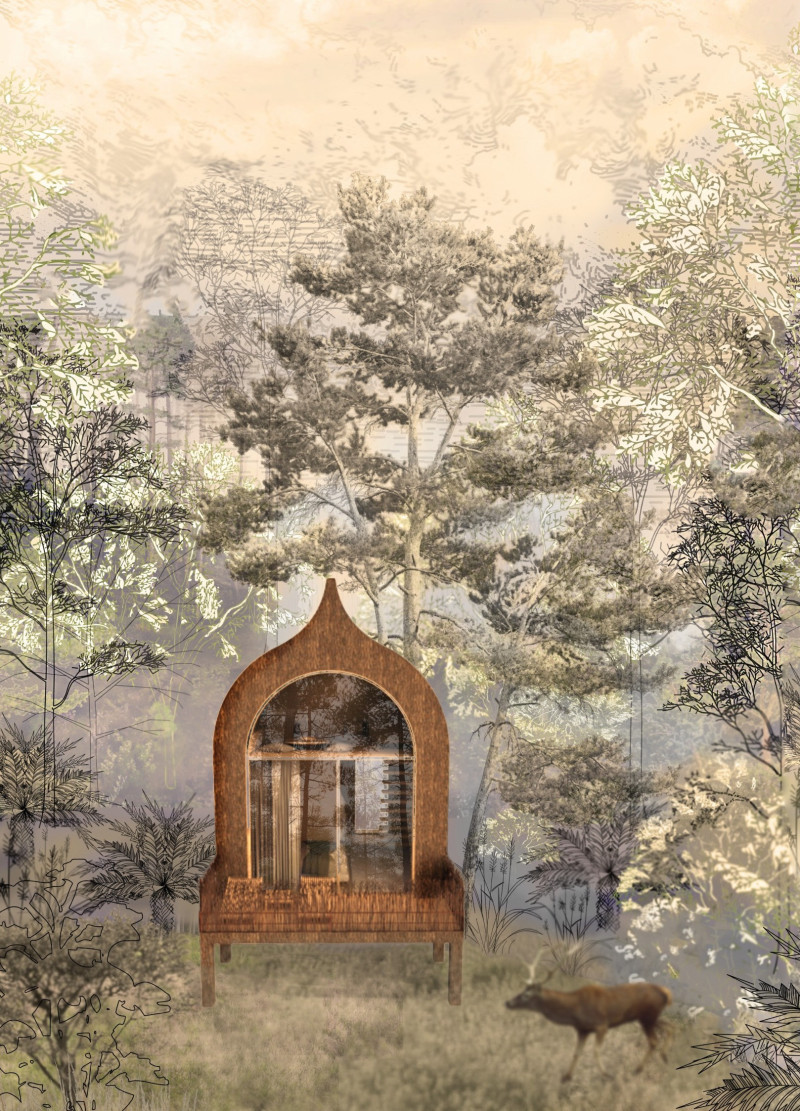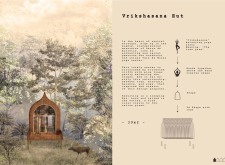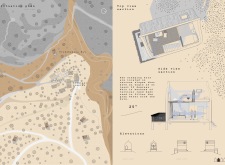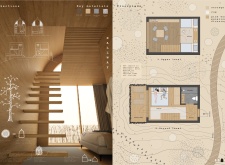5 key facts about this project
The Vrikshasana Hut sits in the scenic Serra da Estrella mountains of central Portugal, serving as part of the Vale de Moses yoga center. It is designed to emphasize nature, balance, and mindfulness, which are essential themes in yoga practice. The name "Vrikshasana," meaning "The Tree Pose," reflects the connection to the environment. The project aims to harmonize human habitation with its natural surroundings.
Design Concept
The hut covers an area of 39 m², providing a flexible arrangement that meets the needs for sleeping and storage. The design prioritizes function while creating a calm atmosphere. By encouraging interaction between indoor and outdoor spaces, the structure enhances the experience of living in harmony with nature.
Site Integration
Located on slopes with a gradient of at least 25 degrees, the hut takes advantage of its surroundings. The use of vertical reed beds helps to filter gray water while promoting the health of the local ecosystem. This approach demonstrates a commitment to sustainable practices, balancing the requirements of habitation with the preservation of the environment.
Material Selection
A specific selection of materials is used in the project, including pine bark, porcelain tile, and sheep's wool. Pine bark serves as a natural exterior layer, connecting the structure to its environment. The porcelain tile provides durability for various surfaces, while sheep's wool serves as insulation, improving energy efficiency and comfort in different weather conditions.
Architectural Detail
The design is marked by simplicity and quiet elegance, allowing it to blend into the landscape without disrupting it. Elevated above the ground, the hut resembles the canopies of trees, enhancing its natural appeal. Each detail is considered to create a space that promotes relaxation and a deep connection with the vibrant surroundings.






















































